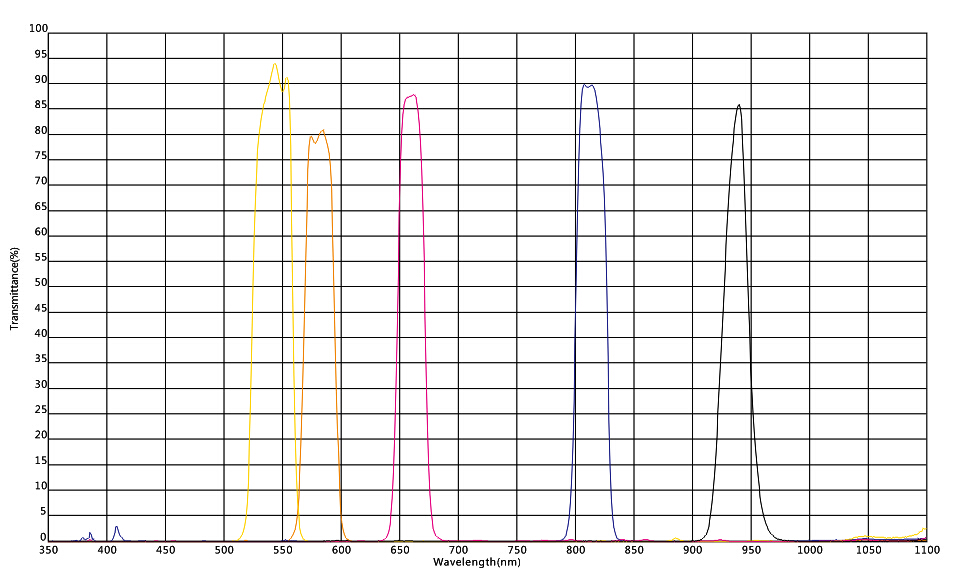Narrow Bandpass Filter
The Narrow bandpass filter is subdivided from the bandpass filter, and its definition is the same as that of the band-pass filter, that is, this kind of filter allows optical signals to pass through in a specific wavelength band, but deviates from those outside this wavelength band. The optical signals on both sides are blocked, and the passband of the narrowband filter is relatively narrow, generally less than 5% of the central wavelength value.
Tags: Optical Filter
A narrow band optical filter is a type of optical filter that allows the transmission of a very specific and limited range of wavelengths (colors) of light while blocking or significantly attenuating all other wavelengths. These filters are characterized by their high spectral selectivity, which means they have a narrow bandwidth – typically measured in nanometers (nm) – and a well-defined center wavelength.

Key Features of Narrow Band Optical Filters:
1. Center Wavelength (λc): This is the primary wavelength that the filter is designed to transmit. It's the peak of the transmission spectrum.
2. Bandwidth (Δλ): The bandwidth defines how wide the range of transmitted wavelengths is. A narrow bandwidth implies high wavelength selectivity. For instance, a filter with a 10 nm bandwidth centered at 532 nm would only allow light around that green wavelength to pass through.
3. Transmission Efficiency: This refers to how much of the incident light within the passband is transmitted through the filter. High-quality filters aim for maximum transmission within the passband.
4. Blocking Range: The range of wavelengths outside the passband where the filter effectively blocks or absorbs light. A good narrow band filter will have deep blocking (low transmission) outside its passband to minimize unwanted light.
Applications of Narrow Band Optical Filters:
Narrow band filters find applications across various fields due to their ability to isolate specific wavelengths:
1. Spectroscopy: In analytical chemistry and astronomy, they help identify chemical compositions by isolating characteristic emission or absorption lines.
2. Imaging: In photography, astronomy, and medical imaging, they enhance contrast by selectively allowing the passage of specific wavelengths associated with certain features or substances.
3. Laser Systems: They are crucial in laser applications to clean up laser beams by removing unwanted spectral components, ensuring the laser operates at a precise wavelength.
4. Fluorescence Microscopy and Flow Cytometry: By selectively transmitting the excitation or emission wavelengths of fluorescent dyes, they improve signal-to-noise ratios and enable accurate detection.
5. Environmental Monitoring: They can be used in sensors to detect specific pollutants or measure atmospheric conditions by isolating wavelengths absorbed or emitted by target substances.
Types of Narrow Band Optical Filters:
- Interference Filters: These use multiple layers of thin films (dies) to create interference effects that selectively reflect or transmit certain wavelengths. They are commonly used for narrow band filtering due to their high precision and adjustability.
- Dichroic Filters: While dichroic filters can be broader, specialized designs can achieve narrow bands. They work based on the principle of dichroism, where materials absorb different wavelengths differently.
- Absorption Filters: These filters contain materials that selectively absorb unwanted wavelengths. They are less common for very narrow bands due to lower transmission efficiency and potential heating issues.
Related Products
Dichroic Mirrors
An optical filter is a device that selectively transmits a portion of the optical spectrum while rej..


